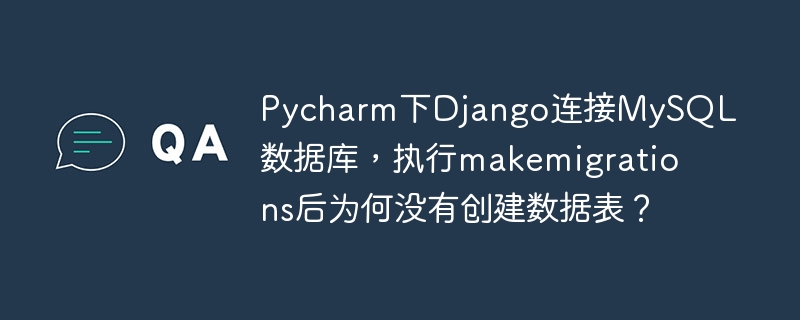thinkphp是一種基于mvc開(kāi)發(fā)模式的php框架,用于快速、可擴(kuò)展和易維護(hù)的web應(yīng)用程序的開(kāi)發(fā)。 在本文中,我們將學(xué)習(xí)如何使用thinkphp框架的強(qiáng)大功能,在web應(yīng)用程序中實(shí)現(xiàn)簡(jiǎn)單的文章編輯功能。
我們將創(chuàng)建一個(gè)名為“Article”的模塊,這個(gè)模塊將包含文章的創(chuàng)建、編輯和刪除功能。我們將從數(shù)據(jù)庫(kù)開(kāi)始,創(chuàng)建一個(gè)新的數(shù)據(jù)表“articles”,它將存儲(chǔ)文章的各種屬性,如標(biāo)題、內(nèi)容和狀態(tài)。
首先,我們需要?jiǎng)?chuàng)建一個(gè)數(shù)據(jù)庫(kù),名稱隨意。在該數(shù)據(jù)庫(kù)中,我們將創(chuàng)建一個(gè)新的表,命名為“articles”。這個(gè)表將具有以下列:
id – 這是每篇文章的唯一標(biāo)識(shí)符,它將是一個(gè)整數(shù),主鍵和自動(dòng)遞增。
title – 這是文章的標(biāo)題,它將是一個(gè)字符串,最長(zhǎng)50個(gè)字符。
立即學(xué)習(xí)“PHP免費(fèi)學(xué)習(xí)筆記(深入)”;
body – 這是文章的主體內(nèi)容,它將是一個(gè)大文本。
status – 這是文章的狀態(tài),它將是一個(gè)布爾值。
created_at – 這是文章創(chuàng)建的日期時(shí)間戳,它將是一個(gè)整數(shù)。
updated_at – 這是文章最近更新的日期時(shí)間戳,它將是一個(gè)整數(shù)。
接下來(lái),在我們的項(xiàng)目中,我們將創(chuàng)建一個(gè)名為“Article”的模塊,我們可以通過(guò)在終端中使用以下命令創(chuàng)建一個(gè)新的模塊:
php think module Article
這將在我們的項(xiàng)目中創(chuàng)建一個(gè)名為“Article”的模塊。此模塊將包含以下控制器:Index,Create,Edit,Delete和Update。我們將在“Article”的模型中定義Articles表,并在“Article”的Index控制器中實(shí)現(xiàn)文章列表。
在我們的模型中,我們需要使用ThinkPHP ORM來(lái)定義Articles表。我們可以將以下代碼添加到模型文件中,以便定義Articles表:
namespace apparticlemodel;
use thinkModel;
class Articles extends Model
{
// 數(shù)據(jù)表名 protected $table = 'articles'; // 主鍵名 protected $pk = 'id'; // 字段定義 protected $schema = [ 'id' => 'int', 'title' => 'string', 'body' => 'text', 'status' => 'boolean', 'created_at' => 'int', 'updated_at' => 'int', ];
}
接下來(lái),在我們的Index控制器中,我們將使用ORM來(lái)獲取所有文章,并將它們傳遞到視圖中進(jìn)行顯示。要實(shí)現(xiàn)這一點(diǎn),我們將使用以下代碼:
namespace apparticlecontroller;
use apparticlemodelArticles;
class Index
{
public function index() { // 獲取所有文章 $articles = Articles::select(); // 渲染視圖 return view('index', [ 'articles' => $articles, ]); }
}
在我們的視圖中,我們將顯示所有文章的標(biāo)題和創(chuàng)建日期,并提供一個(gè)鏈接,以便用戶編輯和刪除文章。視圖文件如下:
<title>文章列表</title>
文章列表
| 標(biāo)題 | 創(chuàng)建日期 | 操作 |
|---|---|---|
| title; ?> | created_at); ?> | $article->id]); ?>”>編輯 $article->id]); ?>”>刪除 |
在我們的“Article”的Create控制器中,我們將顯示一個(gè)表單,以供用戶創(chuàng)建新的文章。表單將包含標(biāo)題和主體字段,以及submit按鈕。我們將使用以下代碼來(lái)實(shí)現(xiàn):
namespace apparticlecontroller;
use apparticlemodelArticles;
use thinkRequest;
class Create
{
public function index() { // 渲染視圖 return view('create'); } public function create(Request $request) { // 獲取表單數(shù)據(jù) $title = $request->param('title'); $body = $request->param('body'); // 創(chuàng)建新文章 $article = new Articles(); $article->title = $title; $article->body = $body; $article->status = true; $article->created_at = time(); $article->updated_at = time(); $article->save(); // 跳轉(zhuǎn)到文章列表頁(yè)面 return redirect('/article/index'); }
}
我們的Create控制器中有兩個(gè)方法:index和create。index方法將渲染我們的表單視圖,create方法將獲取表單數(shù)據(jù)并在數(shù)據(jù)庫(kù)中創(chuàng)建新的文章。
我們的表單視圖將包含一個(gè)
在我們的“Article”的Edit控制器中,我們將顯示與Create視圖相似的表單,但是表單將包含當(dāng)前文章的標(biāo)題和主體字段。我們將使用以下代碼實(shí)現(xiàn):
namespace apparticlecontroller;
use apparticlemodelArticles;
use thinkRequest;
class Edit
{
public function index(Request $request) { // 獲取文章ID $id = $request->param('id'); // 獲取文章 $article = Articles::find($id); // 渲染視圖 return view('edit', [ 'article' => $article, ]); } public function update(Request $request) { // 獲取表單數(shù)據(jù) $id = $request->param('id'); $title = $request->param('title'); $body = $request->param('body'); // 更新文章 $article = Articles::find($id); $article->title = $title; $article->body = $body; $article->updated_at = time(); $article->save(); // 跳轉(zhuǎn)到文章列表頁(yè)面 return redirect('/article/index'); }
}
我們的Edit控制器中也有兩個(gè)方法:index和update。index方法將獲取當(dāng)前文章的數(shù)據(jù),并渲染我們的表單視圖。update方法將獲取表單數(shù)據(jù)并更新文章。
我們的表單視圖將包含一個(gè)
在我們的“Article”的Delete控制器中,我們將刪除當(dāng)前文章。我們將使用以下代碼實(shí)現(xiàn):
namespace apparticlecontroller;
use apparticlemodelArticles;
use thinkRequest;
class Delete
{
public function index(Request $request) { // 獲取文章ID $id = $request->param('id'); // 刪除文章 Articles::destroy($id); // 跳轉(zhuǎn)到文章列表頁(yè)面 return redirect('/article/index'); }
}
我們的Delete控制器中只有一個(gè)方法:index。這個(gè)方法將獲取當(dāng)前文章的ID,并從數(shù)據(jù)庫(kù)中刪除它。然后,它將重定向到文章列表頁(yè)面。
現(xiàn)在我們已經(jīng)完成了我們的“Article”模塊。我們可以在我們的應(yīng)用程序中使用以下URL訪問(wèn)它:
/article/index – 文章列表
/article/create – 創(chuàng)建文章
/article/edit/id – 編輯文章
/article/delete/id – 刪除文章
我們已經(jīng)成功地使用ThinkPHP框架創(chuàng)建了一個(gè)簡(jiǎn)單的文章編輯應(yīng)用程序。現(xiàn)在,我們可以使用這些知識(shí)來(lái)創(chuàng)建更復(fù)雜的Web應(yīng)用程序。
.jpg)

















.png)
